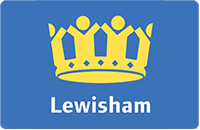Sugar – Why 5%?

We talk to Chartwells Nutritionist Grace Scott MSc BSc about sugar; the good, the bad and the ugly truths.
Q. Is there a difference between ‘natural’ or ‘intrinsic’ sugar compared to ‘added’ or ‘free’ sugar and how much are we allowed to eat?
G.S) In July 2015, a new report by SACN (Scientific Advisory Committee on Nutrition) was published stating that a high intake of ‘free’ sugars is detrimental to health and advise we limit these to 5% of our diet (these recommendations apply to age groups above 2 years).
Q.
But what are ‘free sugars’?
G.S). Sugars are deemed ‘free’ when they are added to foods by the manufacturer, cook or consumer, plus those that are naturally present in honey, syrups and fruit juices.
Q. Do these differ to those sugars we find in our carbohydrates or fruits?
G.S) Quite simply, the answer is yes. ‘Free’ Sugar does not include the sugars that are found naturally in milk, whole fruit or vegetables as part of a whole balanced diet.
Q. what should I look out for when I go shopping?
G.S) Many might believe that they don’t consume very much sugar on a day-to-day basis. But a large volume of manufactured foods contain sugar, they just might be listed in a different way. For example, food labels may contain the more obvious giveaways of sugar; glucose, sucrose or maple syrup, yet others may contain labels such as hydrolysed starch, molasses, maltose…. the list goes on!
I don’t know about you, but if I wasn’t a nutritionist and foodie, a few of those ingredients wouldn’t cross my mind as being a ‘free’ sugar or contribute to that daily 5%.
Q. I always look for brands with ‘natural’ sugars on food labels, do they contribute to my 5%?
G.S) It is important to remember that the ingredients that many market as ‘healthier alternatives’ (agave nectar, coconut palm sugar etc.) are still sugar and should be treated as such. Just because they are given a fancy name does not mean they are healthier for us!
Q. So what does 5% look like?
- children (aged 4 to 7) is 19g, equal to 5 cubes or 5 tsp of sugar.
- children aged (7 to 10) is 24g, equal to 6 cubes or 6 tsp of sugar.
- children (over 11) and adults is 30g, equal to 7 cubes or 7 tsp of sugar.
Having conduced a workshop with teenage girls recently, I spoke to them about sugar and limited the recommendations down to their age group. I then asked who thought they had exceeded that recommendation so far that day. Most, if not all of the girls put their hands up. It was 11am.
Q.Why should we limit ourselves to 5%?
G.S) It is important to be mindful of how much sugar we consume as it contributes to tooth decay, weight gain and type 2 diabetes. I feel that the sugar message should be passed on to everybody, but especially those younger generations where sugar may be routinely indulged in food or beverage forms. Frequent intakes will contribute to childhood and adolescent obesity and negative health consequences in later life.
Read more Blogs by Grace Feed yourself Fuller Winter fight bites


